Beaches, trails and wild places make you feel free from the commercial world, but even there, you often have to pay to get in.
As I’ve traveled around Florida researching Florida Rambler articles, however, I’ve found many free things to do in Florida. Some of my favorite places have no admission charge (which probably helps make them my favorites!)
I’ve scanned through all the stories I’ve written for Florida Rambler since we founded it in 2010 to choose my 10 favorite free things to do in Florida.

Fort Matanzas National Monument in St. Augustine
Fourteen miles south of St. Augustine, located on a scenic inlet where dolphin play and wading birds feast, Fort Matanzas is one of the oldest buildings in Florida. The Spanish fort, built in 1742, 50 years after the grand Castillo de San Marcos fort in St. Augustine, was designed to block the “back door” entrance to St. Augustine through the Matanzas Inlet.
What I love about visiting Fort Matanzas is that the only access is by a free ferry boat across the inlet, in an area that has been preserved as a wild place, much like the Spanish would have found. Rangers give guided tours of the fort, describing its history and the military strategy involved. Here’s more about Fort Matanzas and some suggestions for other great places to see nearby when you visit there.
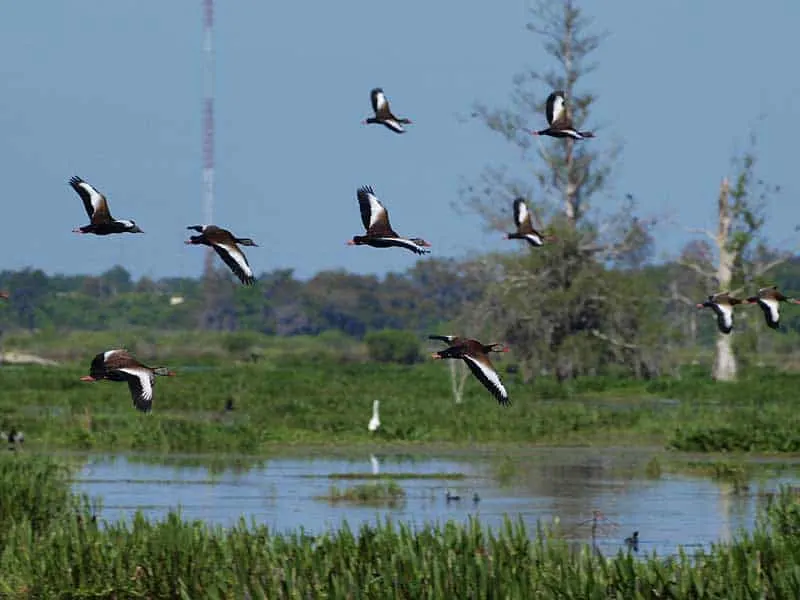
Circle B Bar Reserve in Lakeland
Because Circle B Bar Reserve is a Polk County Park, it’s not well-known outside its region, but it should be. It’s one of the best spots in the state to see birds and other wildlife. Wonderful and extensive trails wrap around Lake Hancock and wind through Banana Creek Marsh. An easy-to-read trail map is available, showing how Circle B Bar Reserve trails are broken into manageable segments to explore.
Located midway between Orlando and Tampa, Circle B Bar Reserve is just 20 minutes south of I-4 on the Polk Parkway toll road, SR 540. Circle B Bar Reserve is especially terrific for birding from fall through spring, when nature photographers flock there to capture images of the huge white pelicans, tropical-pink spoonbills, leggy sandhill cranes, iconic bald eagles and dozens of other birds. Here’s more about Circle B Bar Reserve.
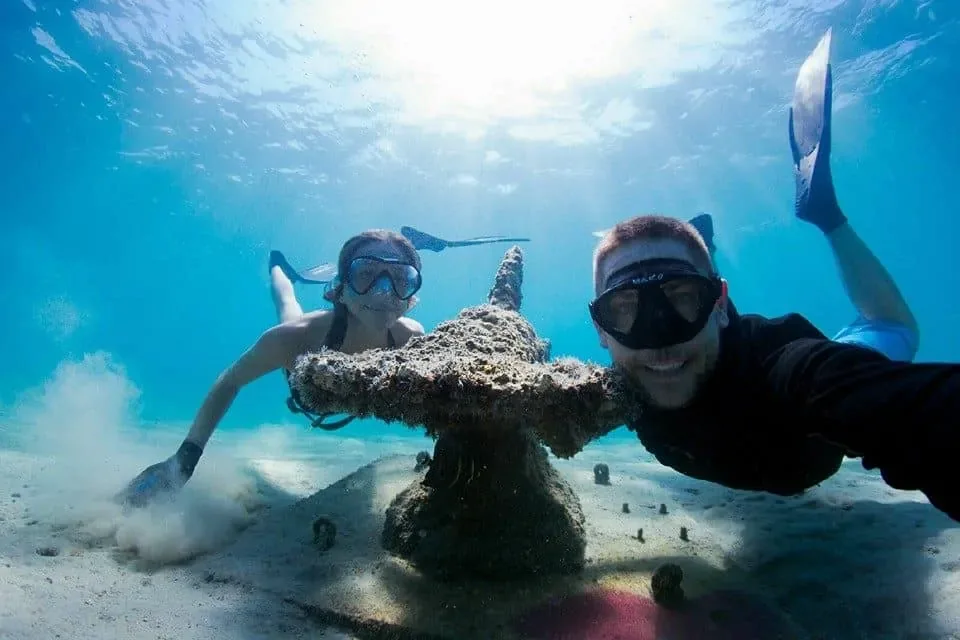
Phil Foster Park and snorkeling trail in Riviera Beach
Another county park, this one in Palm Beach County, Phil Foster Park is special because of the 800-foot-long man-made reef and snorkel trail developed in 6 to 10 feet of water. The location is especially blessed with sea life because it is an island just inside the inlet for the Port of Palm Beach. The island supports the Blue Heron Boulevard bridge, whose pilings and rocks have long attracted a variety of sea creatures — and scuba divers who come to see them. The additional structures created more habitat for sea life at a depth ideal for snorkelers.
This snorkeling site is well-known for the diversity of species. Squid, octopus, spotted rays, and starfish are regularly seen. Colorful angelfish and parrotfish, juvenile snapper, grunts and grouper, damsels, blennies and wrasses are all there.
Here’s more on Phil Foster Park and snorkeling trail.
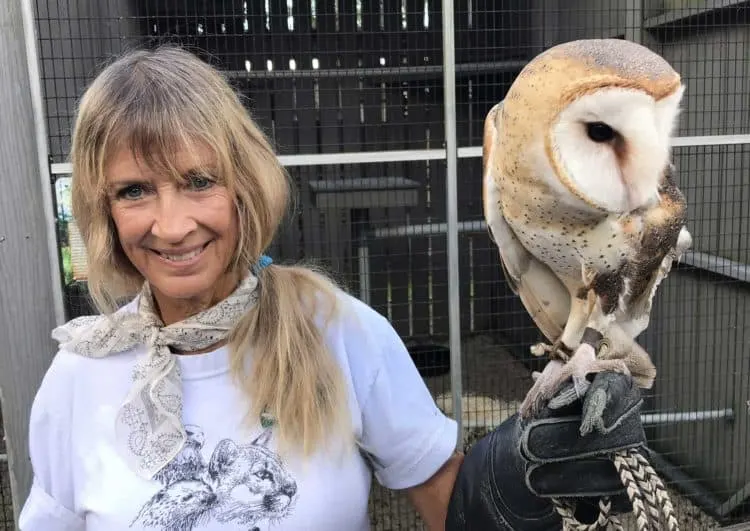
Busch Wildlife Sanctuary in Jupiter
If you love wildlife, you have to love Busch Wildlife Sanctuary for the work they do rescuing and rehabilitating animals. But beyond their good works for animals, Busch Wildlife has developed a beautiful and educational spot for people, where you can see many of the creatures that cannot be rehabbed and returned to the wild.
The facility isn’t huge, but there are paved trails and about 200 resident animals.
All along the trails are well-designed enclosures for birds and beasts, ranging from some of the top predators – Florida panther, black bear, alligator and crocodile – and including deer, otter, bobcats, foxes and a wide variety of birds.
This free daytrip would be perfect for families with kids. Here’s more about Busch Wildlife Sanctuary. There are two other free wildlife rescue centers that also make interesting free stops, one in Key Largo and one in Key West, each described in this guide.
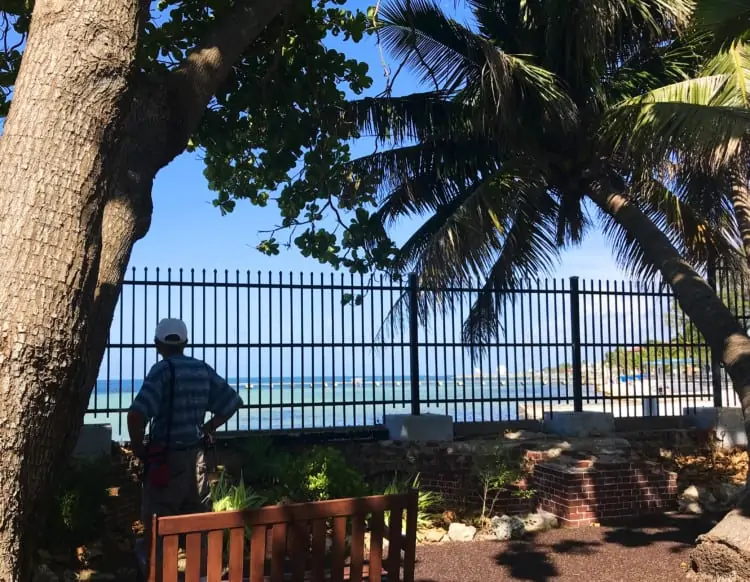
West Martello Tower and Botanical Garden in Key West
Situated on the Atlantic about a mile from the Southernmost Point in Key West, West Martello Tower is a Civil War-era fort that was never finished. Begun in 1863, construction ended in 1873. The tower was used to quarter troops during the Spanish American War and housed radio stations during World Wars I and II.
By 1949, the unused ruin was considered an eyesore and many wanted it torn down. Key West residents fought to save it and the Key West Garden Club took over the site as their botanic garden.
Overlooking the Atlantic Ocean, the tumbled-down fort and the lush tropical foliage makes for a romantic ruin. The gardens are full of orchids and butterflies. It’s a serene and relaxing getaway within busy, crowded Key West. It’s one of several free things to do in Key West described in this Florida Rambler story.
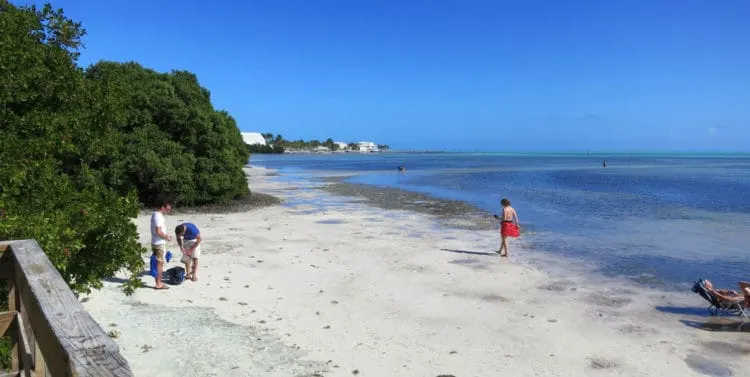
Anne’s Beach in Islamorada
The Florida Keys are not known for their sandy beaches, and many of the top beaches are located in state parks with admission fees. Anne’s Beach, however, is a free stop at Mile Marker 73.5 on the iconic Overseas Highway. It’s a perfect places to get your feet wet.
Rebuilt after the devastating 2017 Hurricane Irma, Anne’s Beach consists of two parking lots and restroom facilities connected by a 1,300-foot boardwalk that winds through the mangroves. Along the way, there are six pavilions with picnic tables. You won’t find a more picturesque spot for a picnic in the Keys.
The water an Anne’s Beach is so shallow that you can’t really swim there; it’s more a place to wade or plop down in the shallow water and relax. We like it primarily as a short stop on a trip to the Keys.
Here’s more about Anne’s Beach.
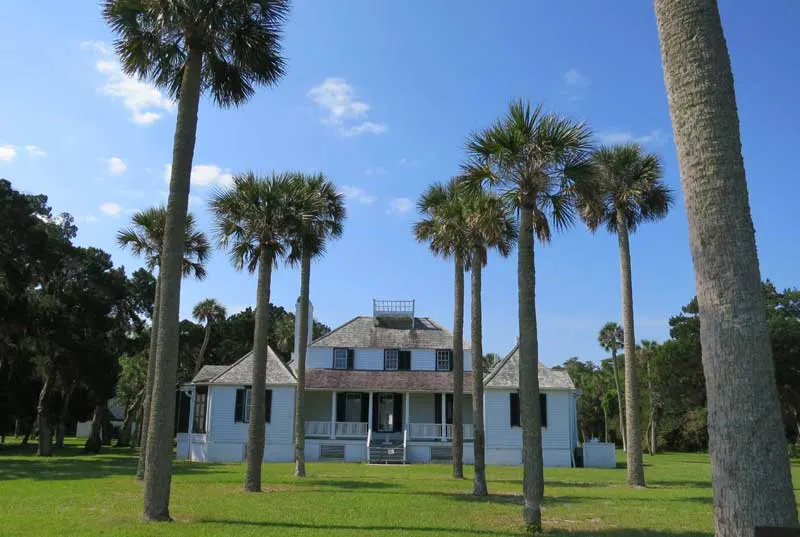
Kingsley Plantation in Jacksonville
The Kingsley Plantation is operated by the National Park Service, part of the Timucuan Ecological and Historic Preserve, which probably wins the prize as Florida’s most obscure national park.
Kingsley Plantation is both physically beautiful as well as emotionally evocative. It has well-preserved buildings: a plantation house built in 1798 and the foundations and walls of 25 slave cabins, neatly lined up in an arc, all along a wide scenic salt marsh on the Fort George River.
It’s the people whose stories you learn here, however, that are so interesting. The tour focuses on Zephaniah Kingsley and his wife Anna Madgigine Jai, who lived on the plantation from 1814 to 1837. Zephaniah, a successful slave trader and planter in Spanish Florida, bought Anna, who was born in Senegal, as a slave in Havana, Cuba, in 1806. She was 13 years old. By the time she turned 18, they were married and had three children. She, however, was still a slave and so were the children. Zephaniah freed her and their children in 1811.
There is much more to the story, especially when Florida is no longer ruled by the Spanish, and that’s why a visit is so interesting. Learn more about visiting the Kingsley Plantation.
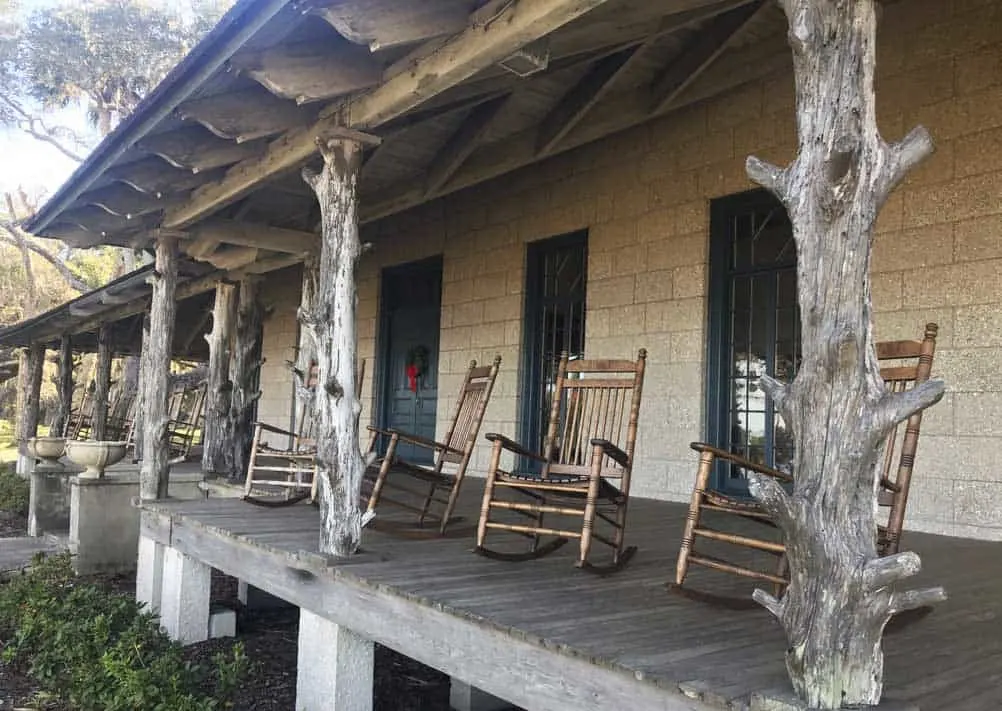
Princess Place Preserve in Flagler Beach
This 1,500 acre preserve midway between St. Augustine and Flagler Beach is a terrific off-the-beaten path discovery. It has miles of hiking trails and is a great place to launch a kayak in the salt marshes.
What makes it stand out from several other parks in the area, however, is its fascinating history. There really was a princess who lived here, although not the Disney variety.
Princess Place is the oldest homestead in Flagler County. It was founded by a wealthy 24-year-old from New England in 1888, who built a grand hunting lodge in the Adirondack Camp Style. The beautiful and historic lodge has big porches where you can sit and enjoy the view. It can be toured on Friday, Saturday and Sunday at 2 p.m.
But what about the princess? The original homesteader died young and his young widow eventually married two more times, eventually, at age 54, marrying a Russian prince exiled after the Bolshevik revolution, which made her a princess.
There’s more to the fascinating tale, as well as more to the charms of Princess Place, which has beautiful rustic camping sites and three cabins to rent. The site also features Florida’s first in-ground swimming pool. Learn more about Princess Place Preserve and a few excellent things to do nearby.
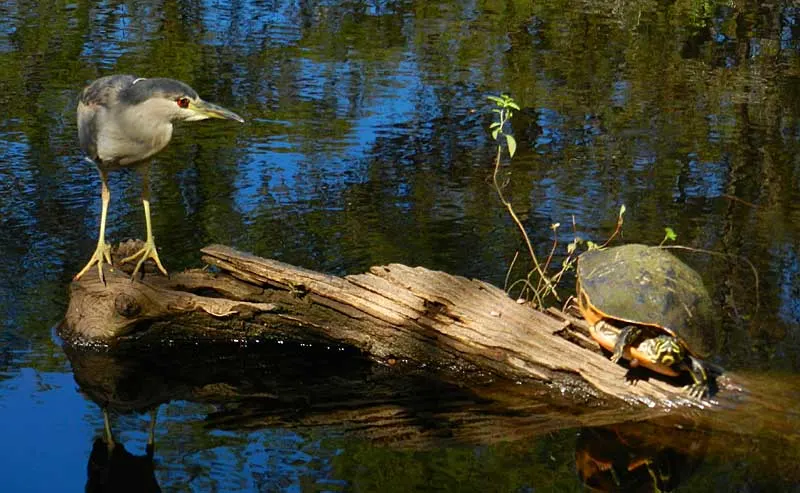
Six Miles Cypress Slough in Fort Myers
This free county park makes an excellent stop if you are driving along I-75 on Florida’s west coast. Six Miles Cypress Slough is five minutes off the expressway and you can walk its 1.2 mile boardwalk and trails in less than an hour. We found, however, it was easy to look and linger and our visit lasted two hours.
Six Miles Cypress Slough is like a smaller, free version of nearby Audubon Corkscrew Swamp Preserve, which we also recommend, but which has a $17 entrance fee.
Along the boardwalk, you pass lakes where you might spot alligators and the cypress slough swamp is lush with a variety of ferns. But the stars of the place are the gnarly old cypress trees, garlanded with airplants.
On our walk, we saw a gator, many turtles, herons, anhingas, cardinals and gar. Big, bright pileated woodpeckers are frequently seen, along with dozens of other types of birds.
There is a well-done nature center that kids and anyone who wants to learn more about Florida ecology will enjoy. The only charge is for parking at $1 an hour.
Learn more about Six Miles Cypress Slough.
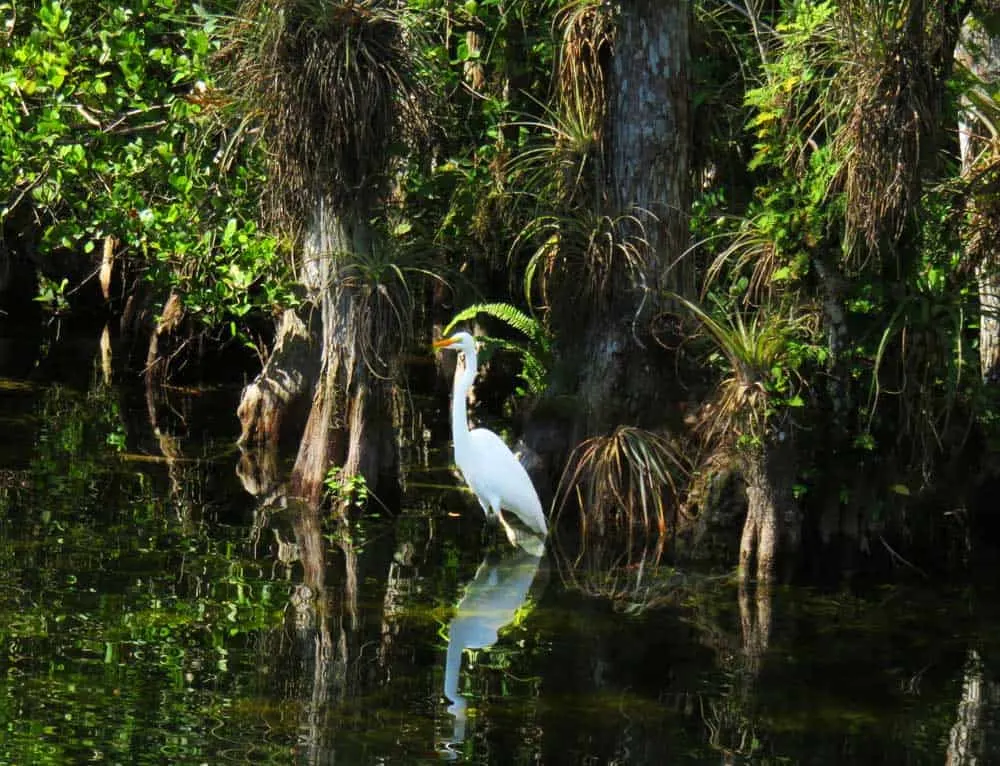
Big Cypress National Preserve in Ochopee
Everglades National Park now charges $30 admission, which a visitor with only few hours available might find prohibitive. But the same ecosystem is shared by the adjacent Big Cypress National Preserve, which charges no admission fee.
It’s location is also an advantage: It’s located along the Tamiami Trail, US-41, a popular route between the east and west coasts of Florida.
Several stops along the Tamiami Trail provide classic Everglades experiences – hikes into the back country, ponds where you’ll see alligators and wading birds. A scenic drive that is an adventure is the unpaved Loop Road, a 24-mile two-lane road that parallels the Tamiami Trail.
We also recommend the Big Cypress Bend Boardwalk, part of Fakahatchee Strand Preserve State Park, just west on U.S. 29 on the Tamiami Trail. It’s a 2,000-foot-long boardwalk through old growth cypress swampland and it is a truly stunning place. It’s worth taking the time to take a stroll here — it’s one the prettiest boardwalks in the Everglades and maybe in the whole state. (While it is managed by the state park, there is no admission fee.)
Here are six ways to experience Big Cypress National Preserve.
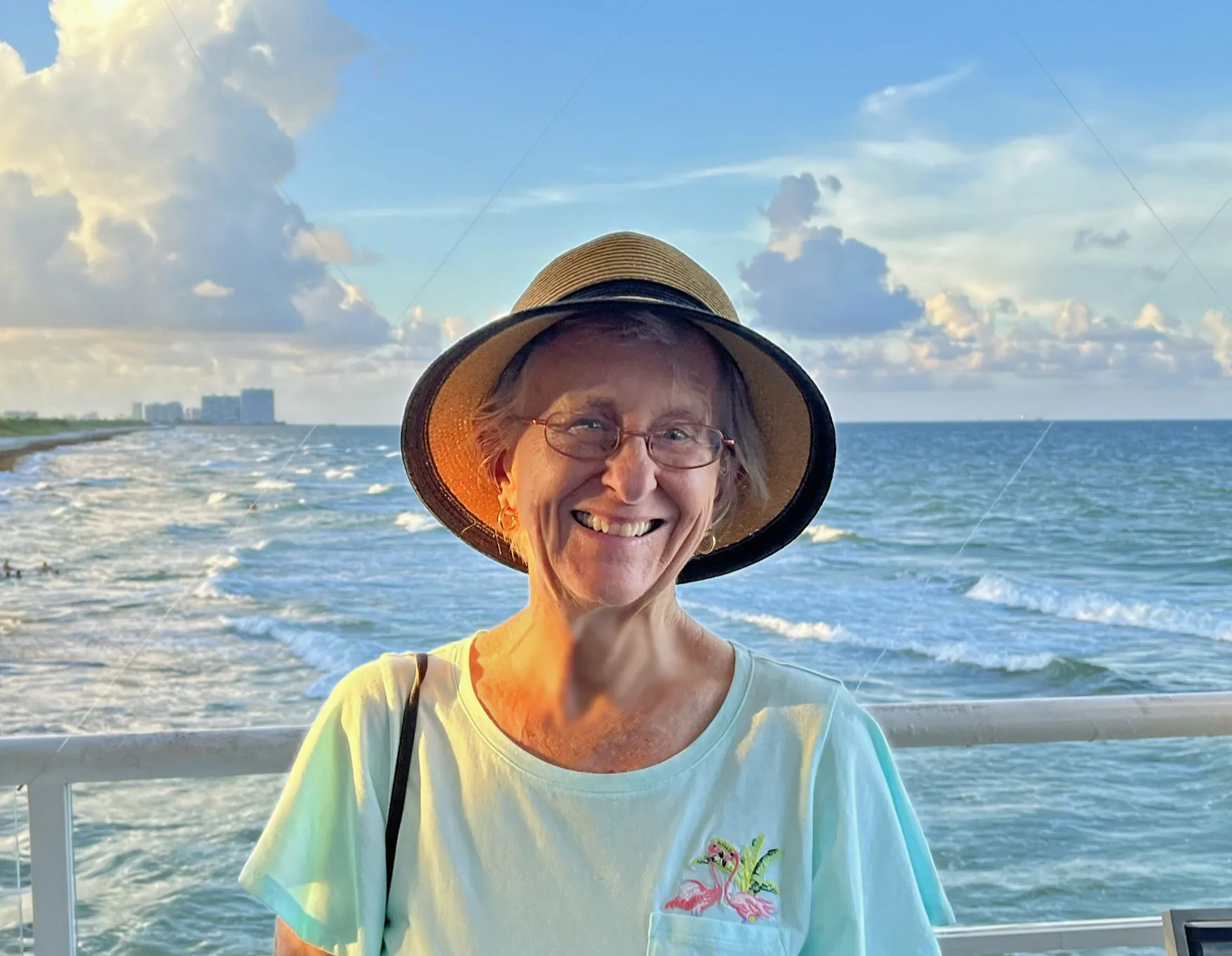
The author, Bonnie Gross, travels with her husband David Blasco, discovering off-the-beaten path places to hike, kayak, bike, swim and explore. Florida Rambler was founded in 2010 by Bonnie and fellow journalist Bob Rountree, two long-time Florida residents who have spent decades exploring the Florida outdoors. Their articles have been published in the Sun Sentinel, the Miami Herald, the Orlando Sentinel, The Guardian and Visit Florida.

David D. Cannon
Thursday 16th of September 2021
I saw the title, and thought. "It better have Fort Mantanzas.........."
Bonnie Gross
Friday 17th of September 2021
Yup. Actually my #1 choice!
sonny foreman
Thursday 16th of September 2021
Excellent selection..